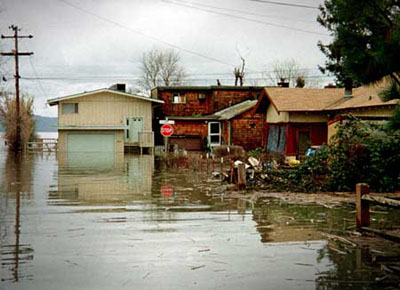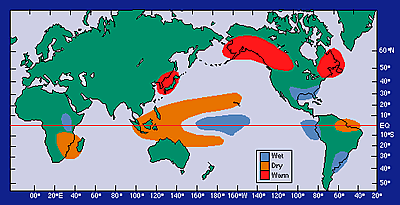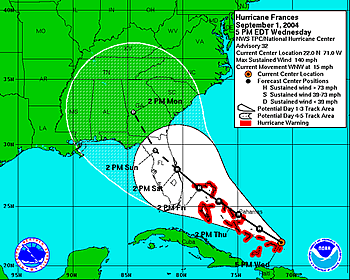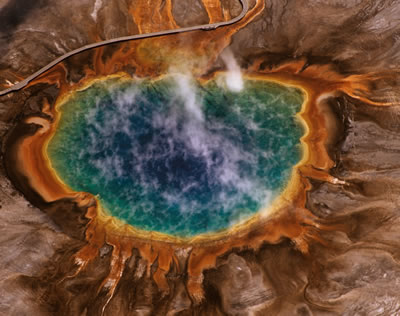Click on image for full size
Courtesy of FEMA
El Niño and Other Climate Events
Sometimes there is a disruption in Earth’s climate system that might last a few weeks or a few months or a year or more. During these events, the air in part of the atmosphere changes the way it circulates for a while. Often there are changes in the ocean too. These changes disrupt the normal patterns of weather in many areas. Weather conditions return to their normal patterns when the atmosphere and ocean circulation returns to its normal pattern.
These disruptions in the atmosphere and ocean can cause changes in the weather both in the area of the disruption and far from it. Changes in the atmosphere in one place that affect weather far away are called teleconnection patterns. Scientists are trying to sort out how this works so that they can better understand and predict weather patterns worldwide.
There are several different patterns of disruptions that happen in the atmosphere and oceans. The largest are described below. These events are natural parts of the Earth’s climate; however they might be changing due to global warming.
The El Niño-Southern Oscillation (ENSO) is the strongest natural fluctuation in climate. It is a disruption of the ocean-atmosphere system in the tropical Pacific that causes changes to weather and climate in places around the globe. Both phases of ENSO – El Niño and La Niña – can cause changes in weather including intense rainstorms, drought, and a change in the amount of storms.
Changes in the North Atlantic Oscillation (NAO) cause variability in Northern Hemisphere winter conditions like the amount of snow and cold temperatures. The NAO is closely related to the Arctic Oscillation and is also affected by ENSO.















